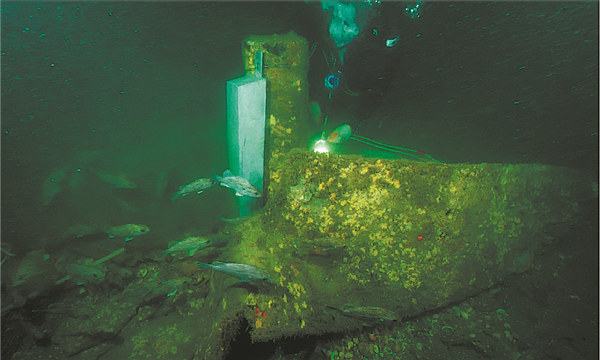

As it was about to surface, adverse weather conditions caused one of the two cables to snap. Concerned that lifting the heavy piece with a single cable might result in it slipping, the team decided to temporarily return the artifact to the seabed.
"The following day, with low visibility in Weihai Bay compounded by stirred-up sediment from sand removal, we had to rely solely on tactile senses underwater," Zhou says.
After around 10 hours of dredging, cable threading and hoisting, the piece was finally raised to the salvage vessel.
"As the component was securely placed on the salvage vessel's deck, we erupted into spontaneous applause. The excavated piece is a poignant homage to fallen heroes," he says.
It was this moment that was captured in the photo on exhibition.
In 2022, wreck of the Dingyuan became the first provincial-level protection zone of underwater heritage site in Shandong.
In addition to excavated components, weapons and ammunition, the ongoing exhibition, which will last until the end of October, also displays many of the crew's daily items, including identity tags, porcelain bowls, leather shoes, mahjong tiles, chess pieces, buttons and fragrance bottles, creating a tangible connection to the past. Thanks to them, the cold record of battle is warmed by items of human interest.
Zhou found a bent silver-plated copper spoon by chance during a dive to explore the armored cruiser Laiyuan off the coast near Weihai in 2023, at a time when the ship's identity had not yet been confirmed.
"I couldn't see clearly underwater due to low visibility, and just happened to touch an object that looked like a spoon," he recalls.
Once on land, he saw that it was inscribed with the Chinese characters lai yuan, making it the first artifact from the site to identify the ship.